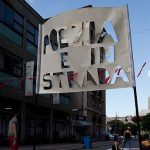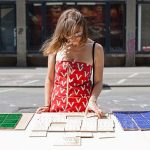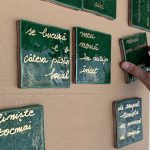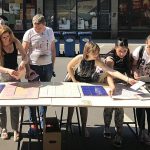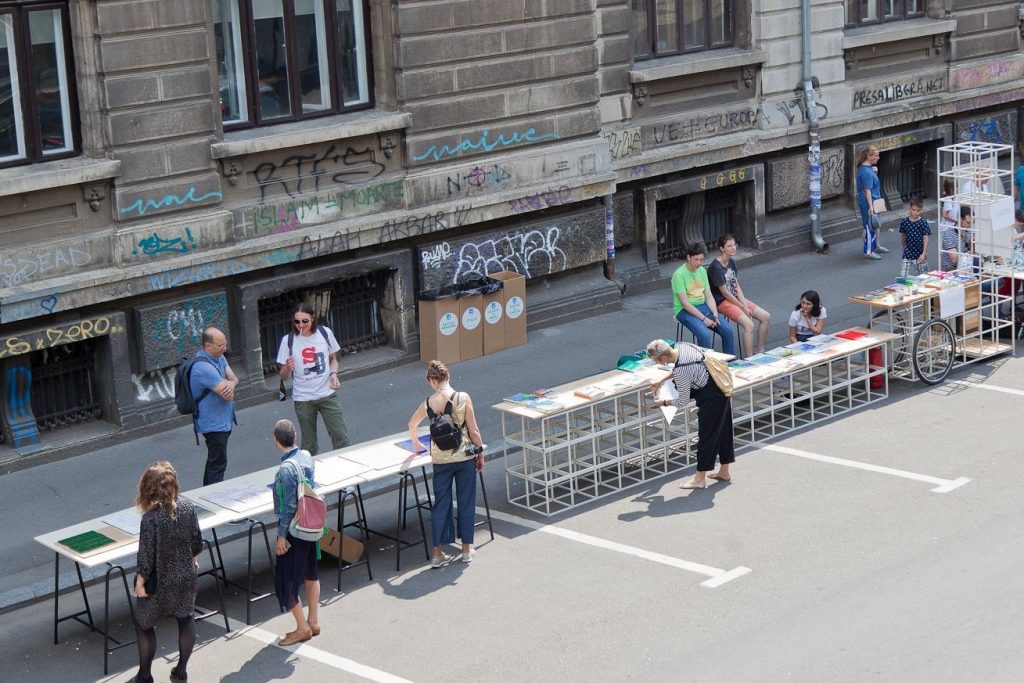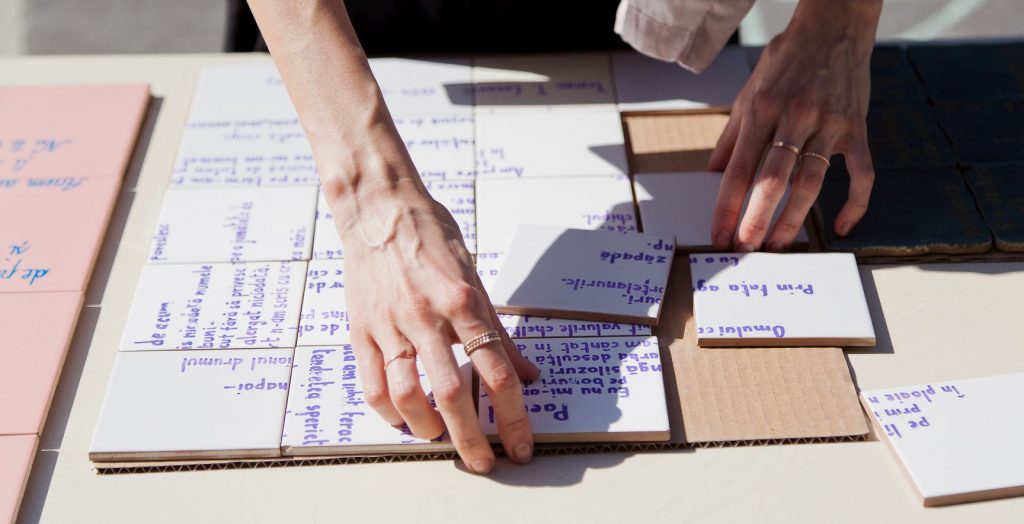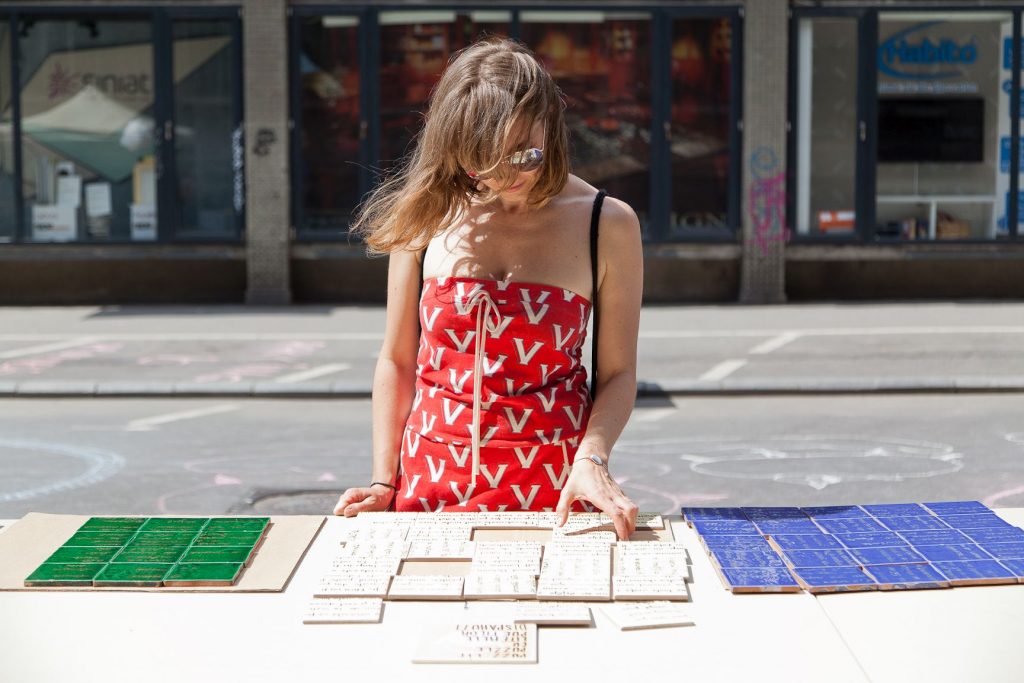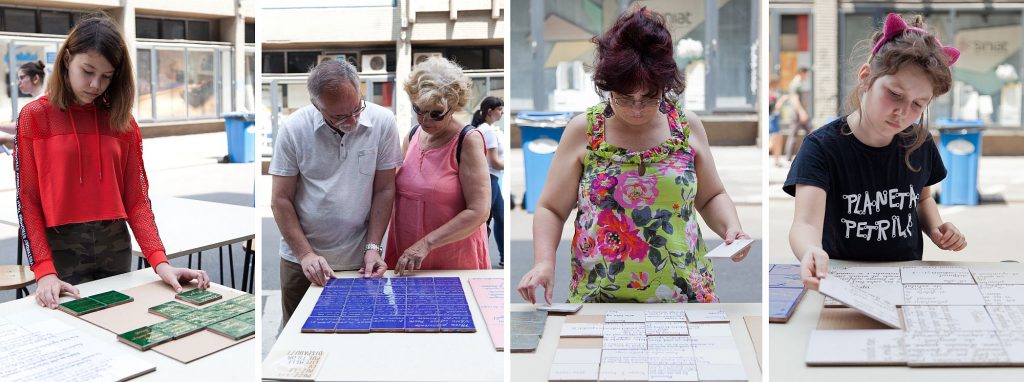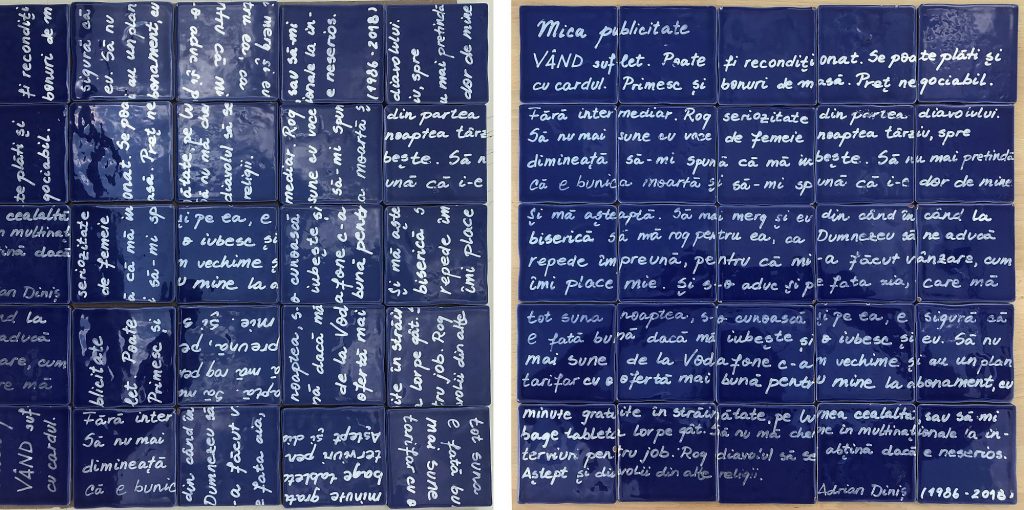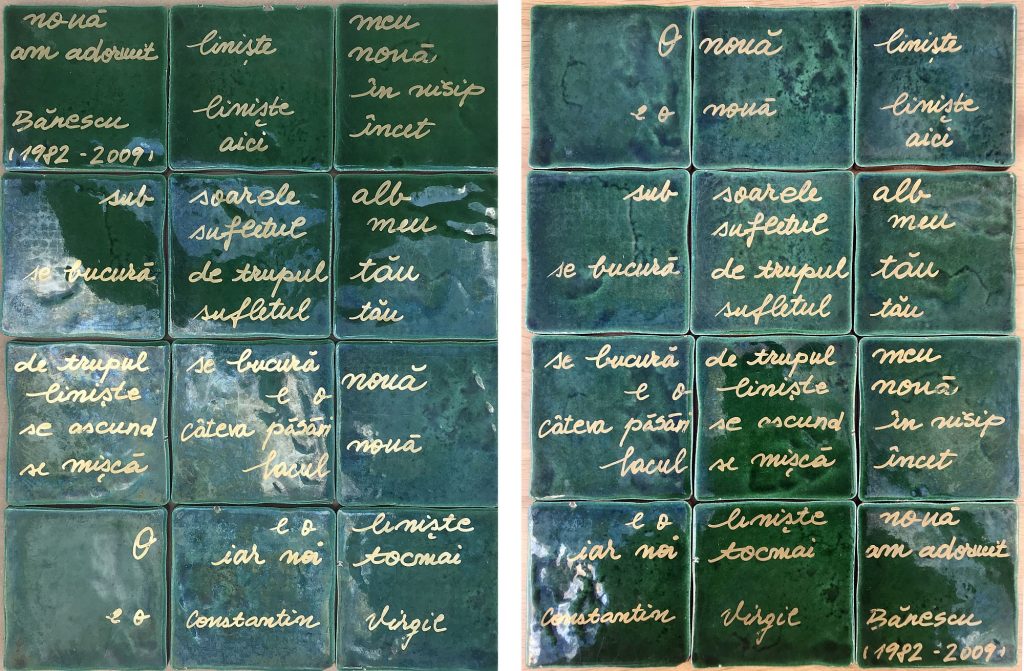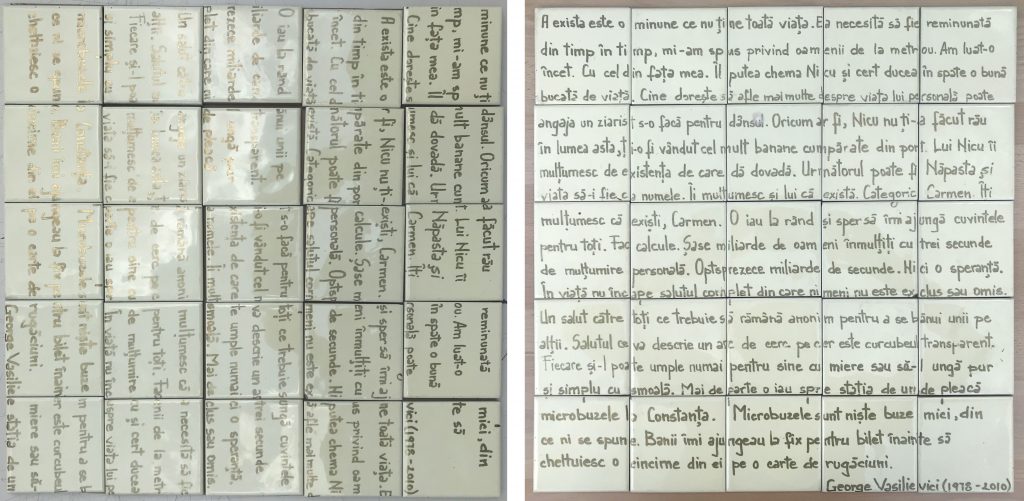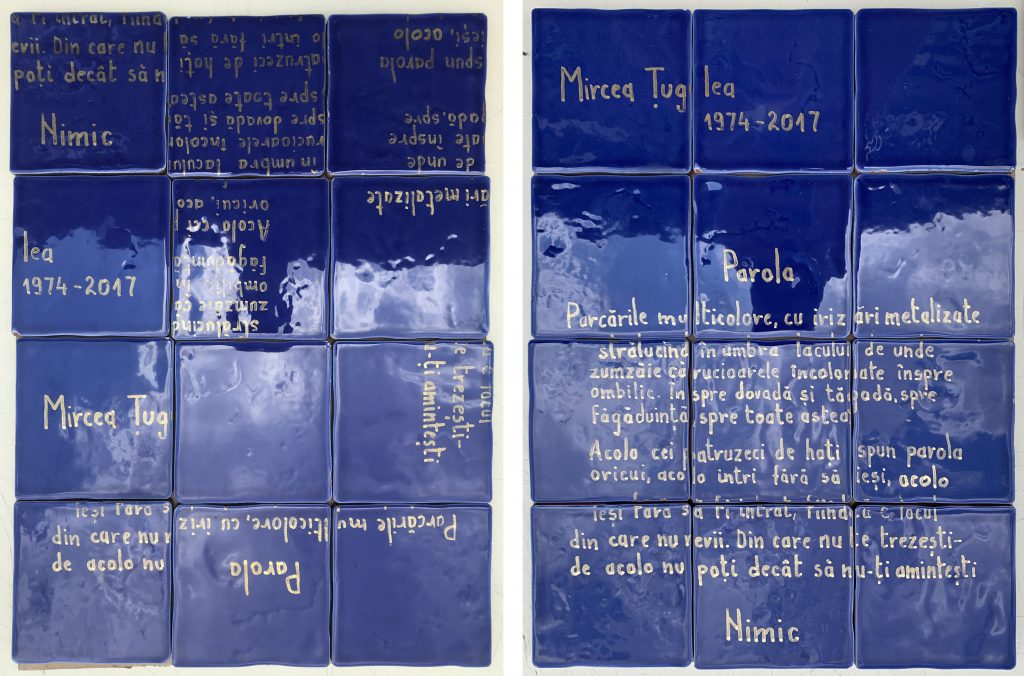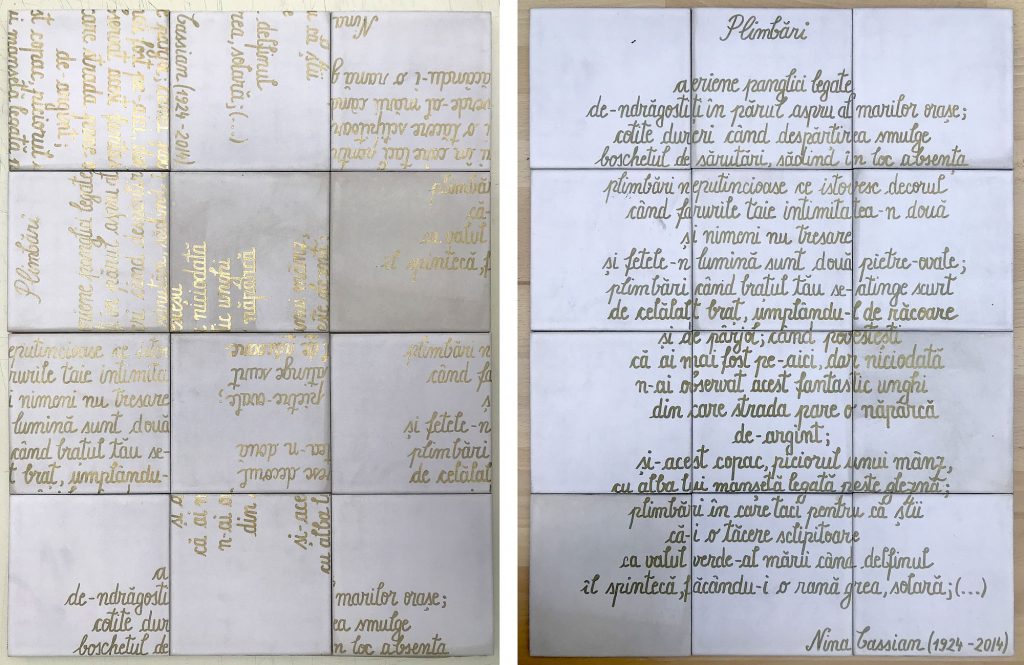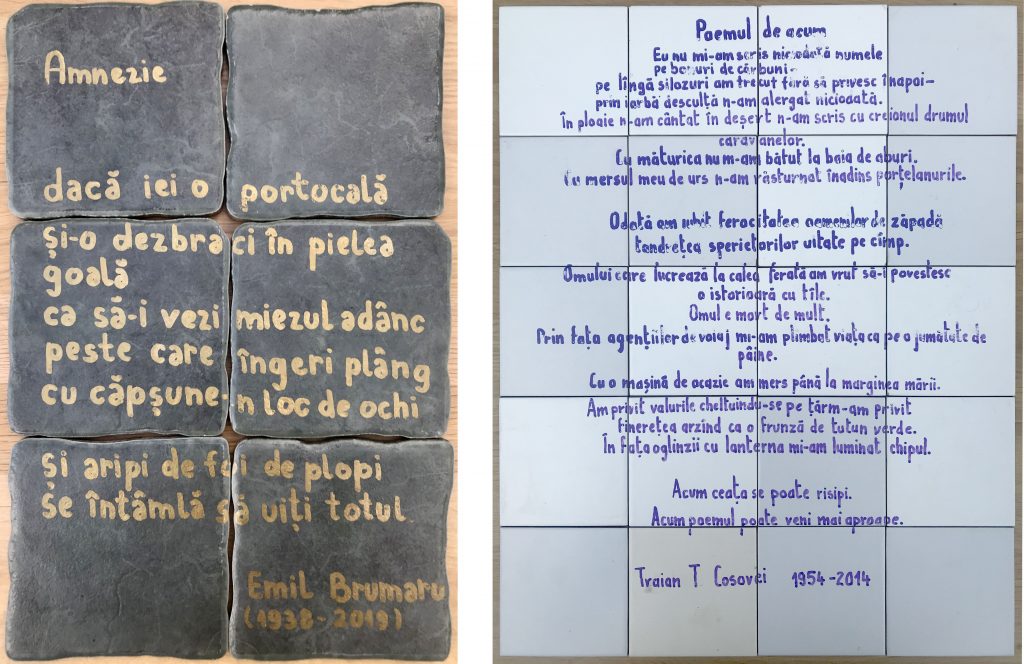Text: Mugur Grosu
Photo: Alexandra Savu, Dorothee Hasnaș, Mugur Grosu
Seven years ago, I spoke with the former chief executive of the London Development Agency, architect Peter Bishop, at the launch of his book, Temporary City. I asked him if there was any place for poetry in the big cities. Of course, he told me, and he recounted architect Jaime Lerner, who reached the position of mayor of the Brazilian city of Curitiba: “In 1979 he was re-elected, and he wanted to change the city. The only thing was that the City Hall was already full of urbanists, architects, and engineers, so he gave them the hardest task he could think of, just to keep them busy, and during all this time he would rather imagine the city alongside poets, writers, and artists, as he knew they could bring new, creative ideas, of how the city may go on. And Curitiba is now seen as one of the most successful cities in the world in terms of urban planning and development. I think that we have forgotten just how much of this truly wonderful experience that is the city, is poetry.”
I fear – I may add – that we keep forgetting the wonderful experience called poetry itself, and we let it linger in libraries or on the shelves of the most obscure bookstores, because “poetry doesn’t sell”. To poetry, book has become a coffin – it is ceremonially respected, from a sterile distance, God forbid we may taint it or it may taint us. For it to breathe in and out, it should be brought close to us, even in the street. This is why I was happy to learn the theme of this year’s Street Delivery Festival – “Poetry is in the Street”. And, in my case, poetry has really encountered architecture. Last winter, I took part in two workshops organized by the Mincu students and architects, gathered in the I’M UAU team, and we imagined a project for their event, Street Delivery Quinet, taking place between 7-9 June, when the street between the Universities would become pedestrian only.
PUZZ_LIT: 8 street games of literary puzzle, consisting of tiles with neatly handwritten poems of 8 recently departed poets. The public was invited to join the tiles to discover the `sleeping` poems.
The tiles had been recovered from the leftovers of another of the I’M UAU team’s project – GEST, the one rehabilitating the toilets in “Ion Mincu” University of Architecture and Urbanism – Bucharest- being recycled from Delta Studio’s end-of-series and waste warehouse. The calligraphy was provided by Cristina Ginara, Ioana Naniş, Iulia Bucsar, Alexandru Ivanof and their tireless mentor, Justin Baroncea.
The street’s reaction exceeded expectations, especially the enthusiasm of children joining in the play.
But the most surprising was the large number of people wishing to buy them. So, inspired by my colleagues, who did something similar, I decided that, after the installation reached the main Street Delivery event (14-16 June), I should entrust the calligraphed set to those who will make donations to one of the Zeppelin-supported projects of emergency intervention: Saving the fresco of the wooden church in Urși – a ProPatrimonio project. or The emergency intervention to the Băile Neptun complex in Herculane Project, managed by LOCUS Association. (Please, follow the links above if you want to support the projects).
This is how, after having come down to the street, poetry can, in its turn, give life.

